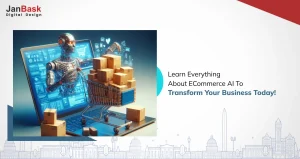
Are you ready to cash in on the global eCommerce boom? The stats don't lie - sales are set to skyrocket to $1.6 trillion in the next three years. Do you know the best way to get your slice of the pie? The answer is Social Commerce.
By making your products available on social media, you can reach a wider audience than ever. If you're itching to start raking in the dough, keep reading - we've got all the info you need on what is social commerce definition and how it can help your e-commerce business widen its customer reach.
Additionally, explore how a professional social-media-marketing company can help you create a solid social commerce strategy.
Interested in our eCommerce Branding On Social Media

Social commerce meaning is a type of eCommerce where the process of selling products and services takes place directly through social media. The entire shopping experience from product discovery to research to check out to the sales page takes place right on social media. Have a look at the image below to understand how Adidas’ Instagram page showcases its product line.
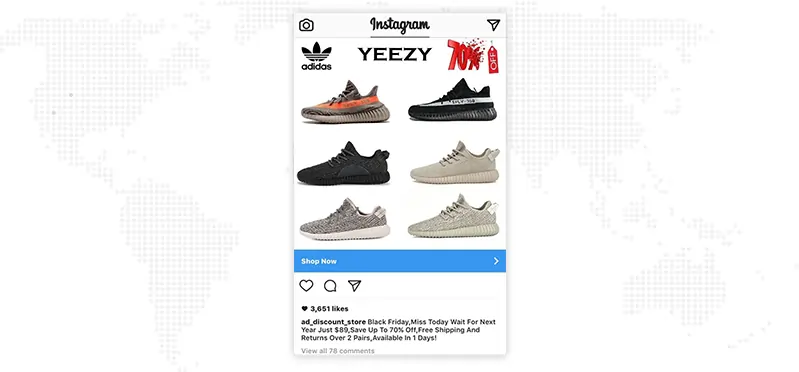
These top social media platforms allow customers to purchase products online and even deliver top-notch customer experience in terms of payment ease and navigability. This helps your brand to be more discoverable and recognizable to the target audience.
It also helps the brands to directly interact with the audiences through social media sites and influence them to purchase the items. Social commerce apps provide a convenient and more enriching experience to the users.
Despite their similarities, social commerce and eCommerce are distinct from one another. eCommerce refers to a selling and shopping experience that takes place anywhere online, such as a retailer's website. These websites are typically created using eCommerce systems like Shopify, and customers may access them from any internet-enabled device.
Social commerce is not eCommerce but one of its dimensions. The whole purchasing process from product research to checkout takes place only within social commerce platforms.
In last few years social commerce growth has been tremendous which provide small businesses with native commerce social media capabilities that you can put up even if you don't have your own eCommerce website.
eCommerce businesses, however, shouldn't view social commerce and eCommerce websites as "either-or" choices if they want to stay competitive. Consequently, you should maintain your website along with your company's social media platforms.
In colloquial language, social commerce is often used interchangeably with social eCommerce but it is incorrect, to say the least. Another term that is frequently mixed with social commerce is social selling but it is also different. Social selling is the process of establishing brand awareness and connections with the intent of making a sale and is done online and offline.
Any brand trying to take advantage of the growing social commerce trends must consciously create a strategy to understand its audience, thoughtful channel selection, and performance measurement tools and tactics. But before delving into the strategies it’s important to understand how Social eCommerce has changed everything and how top social commerce companies can help.
The Social eCommerce funnel eliminates the middleman, giving buyers a simple way to browse products and buy them right away. Facebook formally disrupted the original eCommerce consumer journey with the introduction of its shop feature. Now Instagram has emerged as the leader in social commerce with users to discover, click, and buy with just a few taps.
Facebook Shop and Instagram Checkout imply that marketing initiatives must now more than ever concentrate on raising awareness and encouraging participation, thanks to the updated eCommerce customer journey.
Customer journeys are diverse and complex in reality. Let’s have a look at buying patterns on social media.

Now let's look at some social commerce strategies that can help you capitalize on your success.
Any brand trying to take advantage of the growing social commerce trends must consciously create a strategy to understand their audience, thoughtful channel selection, and performance measurement tools and tactics. Let's look at some social commerce strategies that can help you capitalize on your success.
A successful social commerce strategy must start with the customer, not the product. Ultimately your customer is your hero in your journey so understanding the customer's perspective is very important in your journey of social commerce strategy.
First, you need to identify where your target customers spend their time.This assists you in ensuring that you are investing in the appropriate social commerce platforms to connect with your target audience. Also, research your top competitors to see which all are platforms they use and what is their engagement rate. With the help of all this data, you can devise your social commerce strategy.
Engaging, high-quality content creation tools can boost your sales. High-quality content strengthens the brand voice while attracting, delighting, and engaging the right audience. High-quality content has the power to convert readers into prospects and prospects into paying customers. So it is very important for your business bottom line that you consistently create engaging and original content.

Nike is one of the most followed brands on social media, with 284 million followers on Instagram and 36 million on Facebook. By large the credit goes to the engaging content featuring star athletes. Nike has also amassed sizable followings on channels targeted at specific audiences; the Nike Football account, which is aimed at football fans, has more than 45 million followers. Nike has been a true brand leader, going above and beyond with its own app ecosystem (Nike Shopping, Nike SNKRS, and Nike Training Club), which has contributed to 18% of its annual revenue growth in its digital business.
Influencer marketing has recently gained momentum and has already become an increasingly important activity for brands—one that will require constant optimization. Brands must find the right mix of macro- and micro-influencers in addition to carefully selecting creators to work with based on factors such as the influencer's interests, demographics, and reach.
Brands benefits from tracking the effectiveness of their influencer campaigns throughout the advertising funnel, including top-of-funnel metrics like engagement rates and video views, which help brands to understand how content is performing. Although sales are the ultimate goal, social and creator platforms can still help raise awareness.
Mega-influencers and celebrities often leverage their large fan base to launch their own product lines. Rather than competing with these creators, brands can collaborate with them, forming spin-offs in which the creators own a stake and retain significant creative control, while the brand brings strengths in areas such as manufacturing and omnichannel distribution.
Although influencers and celebrity creators dominate social media, brands can attract consumers to their own channels through engaging and innovative short videos and live streaming. Brands can build enthusiasm, provide an interactive forum for feedback and questions, and develop a new sales channel by creating compelling content and attracting influencers to their channel.
Combine the interactivity of in-person shopping and eCommerce with Livestreams. Understand your customers and answer their questions in real-time by hosting Q&A sessions, product launches, demos & tutorials.
Also, it removes the barriers to purchase and creates personalized connections with the help of these live sessions. Utilize the product hashtags in your live broadcasts to allow your audience to purchase your products spot on.
Samsung: Tech Meets Tech in Shoppable Live Stream
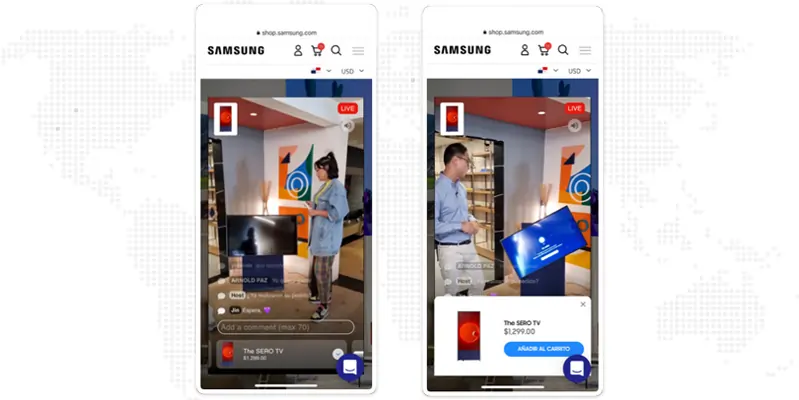
Samsung Panama in association with its video platform partner delivers a highly successful live shopping experience with exclusive, event-based discount deals. Samsung sales representatives demonstrated a variety of products to hundreds of viewers. Customers could communicate with the hosts through a chat bar by providing a nickname. This resulted in a truly personalized shopping experience that emulates the advantages of in-person shopping.
Master the basics of social search optimization if you want to stay relevant in the social commerce space. Start with content strategy, understand what kind of content your audience is likely to consume, and focus on creating relevant content that resonates with your target audience. If your content resonates with your audience then it is much more likely to perform well.
Follow this checklist for your SEO fundamentals:
Use these simple steps and make your social commerce content more discoverable and engaging to your audiences.
Add conversational prompts with the help of automated social shopping bots to help move your followers through the customer journey. This helps you to close sales 24/7 while reducing cart abandonment. Brands need to strike a balance between using bots to boost conversions and finding alternative ways to stay in touch with customers.
Convenience reigns supreme in the world of online shopping. So, try to create a purchase process that is as simple as feasible from beginning to end across all important channels.
To connect and convert social media browsers into consumers, you need an integrated, omnichannel social commerce strategy that combines your online and in-store experiences. Consider y our customer data and insights as well.
Integrate your e-commerce and social commerce platforms to reduce friction and produce a more seamless customer experience. By doing this, you can be sure that your inventory is always accurate, your product catalogue is current, and you are constantly marketing the appropriate products at the appropriate times.
Your brand's biggest mistake is when you abandon your user's questions or comments. Unanswered questions, complaints, and queries in the comment section of your page are taken more seriously on platforms like Google Reviews. Actively monitor the comments and DMs receive and respond proactively.
The top priority of every brand is to drive sales but social media is very different from other marketing channels.
Look for opportunities to benefit social media users. How, for instance, can you entertain and engage them while simultaneously guiding them towards an understanding of how your product functions, how it may help them, or how they can utilise it in their daily lives?
Combining product tags with an influencer video demonstrating how to use your product is a powerful approach to educating and encouraging your audience to buy from you.
Nurture your social media customers to have a higher chance of repeat purchases. leverage these three steps to stay top of mind with your social commerce customers.
Offer coupons: Consumers, in general, are always willing to engage with a new brand on social media if a discount is being offered. Custom, time-limited digital coupons made available on social media can encourage customers to make their first purchase from you and help you in how to generate leads for upcoming marketing campaigns.
Promote your loyalty programme: After a customer makes a purchase, give them the option to sign up for your loyalty programme. By providing insider offers, discounts, and unique rewards for recurring consumers, loyalty programmes can strengthen relationships with customers.
Encourage client testimonials: When a consumer makes a purchase, create an automated email inviting them to submit a review, along with a link or QR code directing them to the review submission page. You can even offer incentives to entice customers to leave reviews, such as coupon codes or temporary discounts.
Social Commerce examples will show you how leading brands use social commerce to increase sales and engagement. This will motivate you to step up your social commerce game.
Nike Jordan's iconic shoe line collaborated with Snapchat to capitalize on the NBA All-Star game. The brand provided all of its customers within a specific field with access to an exclusive launch sale. The offer was for a limited edition Air Jordan III 'Tinker,' which was only available in the court area where the game was being played.
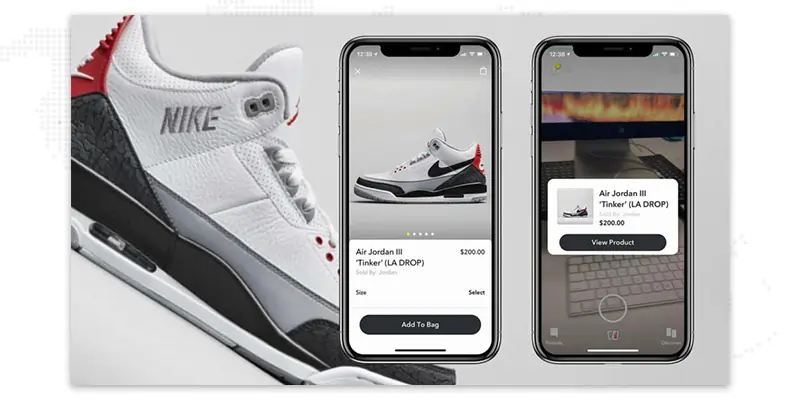
This integration of social media and shopping makes the sale more interesting and brings people together. It becomes a seamless experience for customers to purchase the shoes.
This is an excellent digital marketing strategy for directing social media users to support your marketing efforts while also increasing brand sales. Snapchat was an excellent choice because people tend to create stories at such events.
Dollar Shave Club is another popular social commerce example. It is up to brands to either build or destroy their followers' trust. Even if current customers are not afraid to spend, brands should do everything possible to earn their customers' trust. Social proof is a crucial and valuable marketing tool for any company or brand.
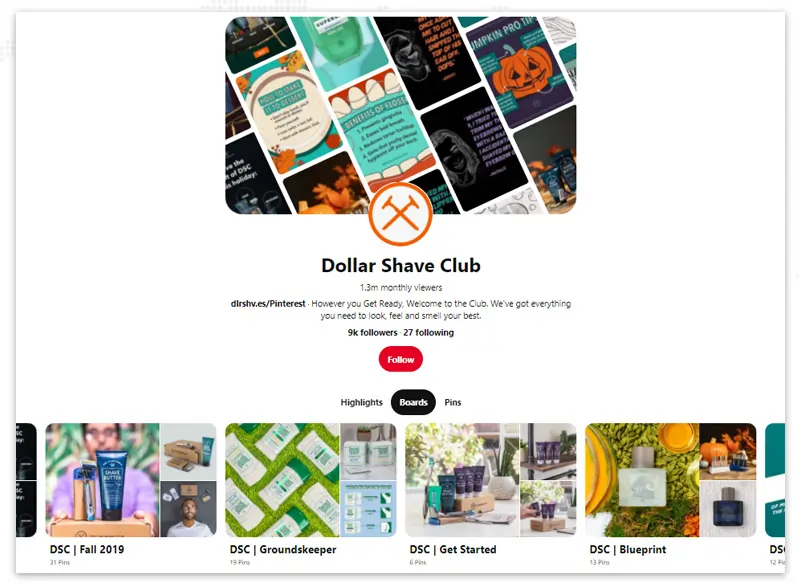
In an eCommerce space rife with competition, using positive feedback from your customers acts as powerful social proof. This will not only help you stand out from the crowd, but it will also help you gain the trust of your customers.
Dollar Shave Club, for example, has a Pinterest board dedicated to positive customer feedback and unboxing photos.
This clever combination of user-generated content and social proof results in fantastic social commerce in real life. It aids in the development of brand trust, authenticity, credibility, and more profitable returns.
Chatbots can improve customer engagement by providing a plethora of intriguing opportunities.
Consider the case of Avon, which cleverly used a messenger chatbot. They were able to test a lipstick shade before purchasing it by using a special plugin and camera filters.
You don't need to create fancy AR filters to attract more customers when using this social commerce concept.
This is an eye-catching and noteworthy method for sending newsletters or distributing promotional codes.
L'Oréal's integrated social commerce tool enables potential customers to make a purchase via Facebook, Facebook Messenger, or LINE official account. This allowed them to place orders via discrete chat windows (as opposed to a phone call or a website).
eCommerce also augments the brand with content, messaging, and tone of voice that are unique to the consumer. It also allows them to communicate directly with a Customer Service representative or "Beauty Expert." In exchange, L'Oréal is able to secure customer data that can be used to strengthen the brand's relationship with customers while also increasing engagement with the brand.
Facebook Messenger (CTS) allowed L'Oreal to speed up the transaction process and lower the Cost of Serve by providing a swift response. The presence of its shoppable features reduces the amount of investment required to set up an e-commerce website. Within 5 months, of the campaign's launch, the new social commerce platform saw an increase in customer engagement on the L'Oréal Facebook fan page, with an average inquiry-to-sale conversion rate of 22%.
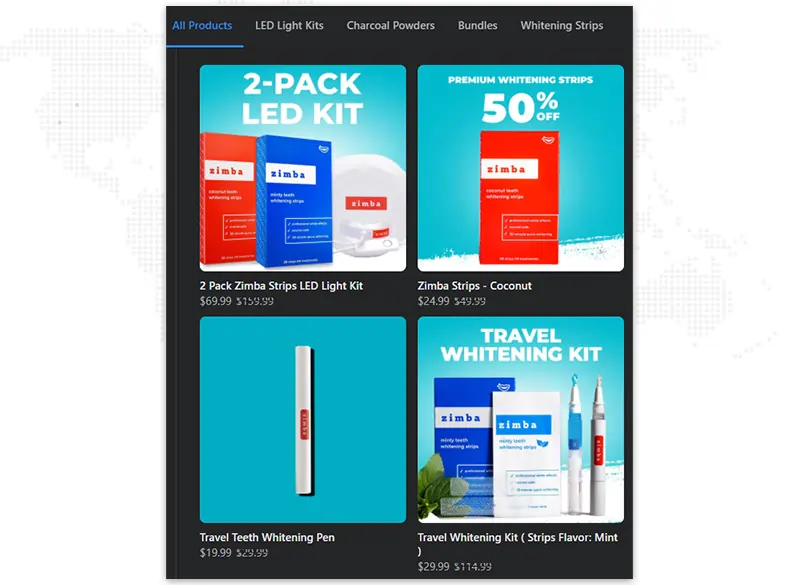
Zimba on Facebook sells teeth-whitening products. Zimba has decided to experiment with Facebook Shops in the summer of 2020. The results were difficult to ignore due to the use of bold images and consistent branding services. Over a two-month period, the company received 1,200 additional Shop orders and increased its average order value by 6.7%.
Headway, an educational technology app that provides personal development content, saw a 15% decrease in cost-per-acquisition, a 10% increase in video views, and a 10% increase in trials. with its reel ads. The Reels placement allowed the company to broaden the audience and reach new customers through new types of ad content—video explainers. With the decrease in cost per acquisition and increase in conversions, the organization persuades to continue working in this promising Reels area.
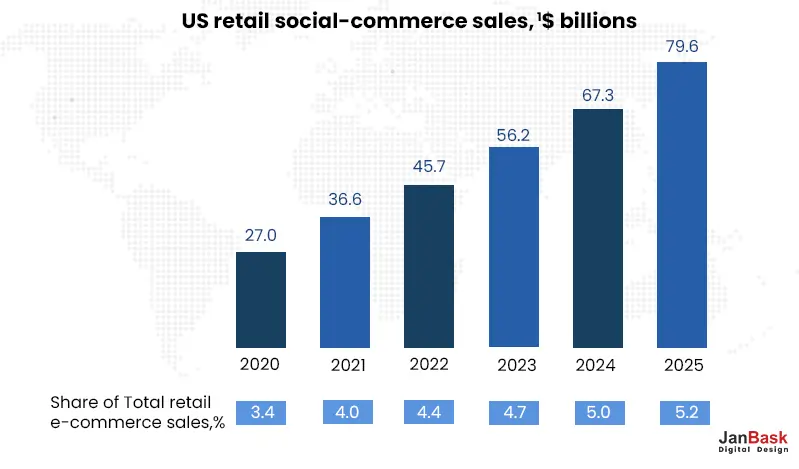
The US market has evolved differently in recent times than China’s social commerce and may not achieve the same level of adoption. Still, there is some resemblance of social commerce to the Chinese market from a half-decade ago. Social media and content creation platforms (such as Pinterest and TikTok) are driving new shopping capabilities in the United States. These technological features enable platforms to process transactions, gain access to first-party customer data, and expand their ability to provide value to advertisers.
Social media platforms can now draw a much more direct line between advertising impressions and verified sales by simply targeting consumers with top-of-funnel awareness campaigns. Social commerce is also a completely new revenue stream for platforms. Platforms can increase their average revenue per user by taking a cut of each transaction.
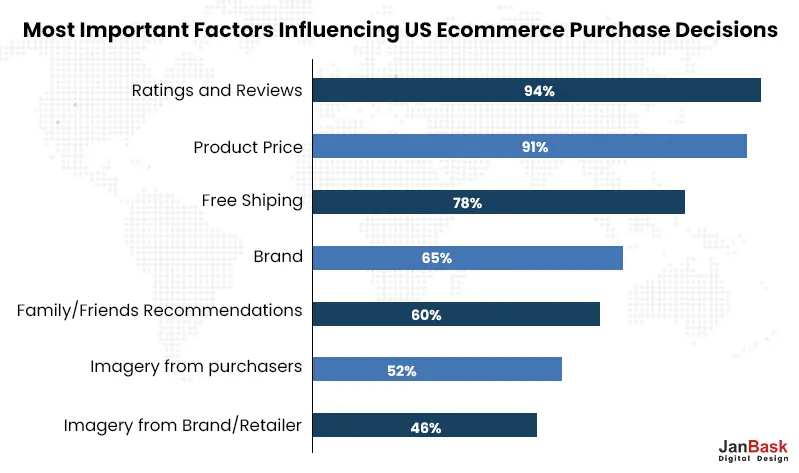
Over the last few years, US social and creator platforms have added multiple social-commerce features:
Pinterest: Pinterest's "Shopping List" feature, launched in 2021, automatically saves users' shoppable product pins (launched in 2019 and uploaded from verified retailers), displays product reviews, and notifies users when a pinned product has a price reduction.
Instagram Shopping Live: Instagram shopping live, launched in 2020, can live stream on Instagram to introduce and sell products to fans in real-time. This enhances the influencers' ability to include shopping tags in their posts that consumers can use to purchase products. Brands can also use Instagram to create a digital, shareable catalog of their products, with customers purchasing directly from the app or clicking through to the brand's e-commerce site.
Shopping on TikTok: Videos and live streams were launched in 2021 in collaboration with Shopify. It allowed Shopify merchants to sync their product catalogs to TikTok and create mini storefronts.
Shopping on YouTube: Companies now sell on YouTube through live streaming, videos, or a storefront, thanks to a partnership between YouTube and Shopify.
Twitter Store: Shops allow businesses to display up to 50 products on their Twitter profile, transforming the platform into a place where people buy products rather than talk about them.
Amazon.com Live: This live-streaming feature debuted in 2019 and allows brands and creators to broadcast product demos and other innovative content. Tens of millions of customers watched Amazon's Prime Day 2022 live streams, as per the company’s sources.
Snapchat: Snapchat introduced AR filters, also known as "catalog-powered shopping lenses," to make the purchasing experience more compelling.
The growth in social commerce in the United States is surely going to be challenging, with roadblocks ahead. Meta, which had recently tested a number of social-commerce tools, including a native, end-to-end affiliate marketing program, has discontinued it in favor of its Creator Marketplace. Furthermore, tests of on-platform checkouts from companies like YouTube and Pinterest have reportedly seen slow adoption, with Shopify remaining a preferred checkout tool.
The increasing amount of time spent by Americans on social and creator platforms has led to a rise in demand for new shopping features, especially among younger generations. According to a 2021 survey by Forrester, 61% of online adults under 25 in the US said they had made a purchase on a social or creator platform without leaving the app or website, up from 53% in 2020. Furthermore, a 2022 McKinsey survey revealed that 75% of US consumers who have previously engaged in live shopping want to attend more live shopping shows in the future.
Many key brands have already shifted their focus in social media marketing for eCommerce and are investing well to keep their brand alive and kicking. Furthermore, social commerce growth trends indicate that this trend will only go upward from here.
So with a solid strategy, let's uncover the benefits of social eCommerce:
With increasing numbers joining social media, you have more chances of connecting with your target audience. The Increasing use of social media also propels the demand for social eCommerce. These numbers spell more potential customers to join your social media marketing for eCommerce. Understand your target audience and tap the real potential of social eCommerce.
Customers are more likely to become bored and withdraw from what may have been a successful purchase. Fortunately, eliminating unnecessary steps that add friction to the process is possible with social commerce. With native features like Purchase buttons, in-app checkouts, and instant chat for reachable customer service, you enable consumers to stay conveniently within the app.
It's been mentioned time and time again that people read ratings and reviews before making purchases, particularly in social commerce where buyers cannot test or try items out in person. Reviews are user-generated content (UGC) that many firms seek to build brand confidence on social media for eCommerce. Platforms for social commerce give your customers an easy way to leave feedback, whether it's in the form of comments or reviews on your page.
Demographic information, such as gender, age, and geography, is easily accessible for you if you've ever explored the Google AdWords services manager of any corporate social networking platform. As a result, client information is abundant on social commerce platforms, and this piece of information can guide you in your social media marketing for eCommerce.
For instance, Facebook Audience Insights give marketers even more comprehensive analytics. You may easily access education levels, job titles, and relationship statuses in addition to basic demographic information. Also, individuals can be targeted by eCommerce retailers depending on their interests and hobbies.
Facebook, Instagram, and Pinterest are the major players in the native social commerce platforms, but there are other platforms as well which are not far behind. YouTube, Twitter, etc, are also pressing to stake their claim. Let's look into the major social commerce platforms.
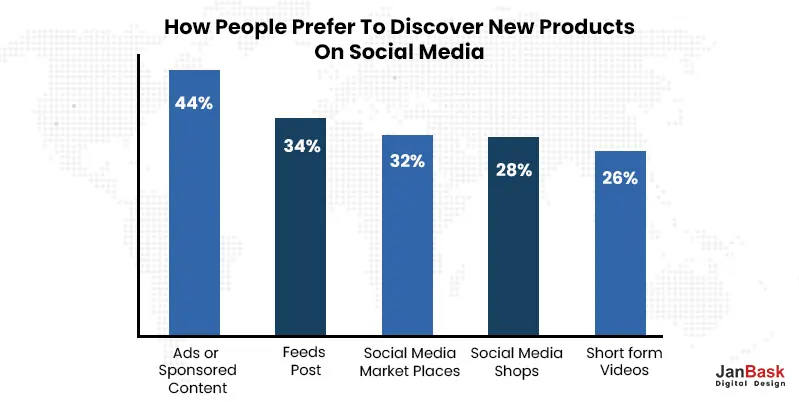
Facebook reigns as the most preferred platform for making transactions since 2021 along with Instagram. The entry threshold to the platform is incredibly low. Also, Facebook Shops offer a lot of customization. You are free to choose which items or collections to focus on and to adjust the typefaces, graphics, and colour theory to better represent your brand. A product catalogue can be made from scratch or via import.
According to Instagram, 60% of users find new products there. Users may buy things featured in your content, whether it be images or videos, anywhere in the app. Your Facebook Shop is directly connected to your online store. Nevertheless, you are not needed to create a Facebook business page when setting up your shop if you only plan to sell through Instagram Shops.
According to Pinterest, 80% of weekly Pinners have found a new brand or product on the platform, making Pinterest a great place to promote your small business. Also, brands may upload their products to the network and then turn them into product Pins using Pinterest Shopping. These Rich Pins automatically get information about your products, including descriptions, costs, and availability. Moreover, you may enable a Shop tab on your profile, which collects all of your product Pins in one location. Have a look at the rise in social media usage for commercial use.
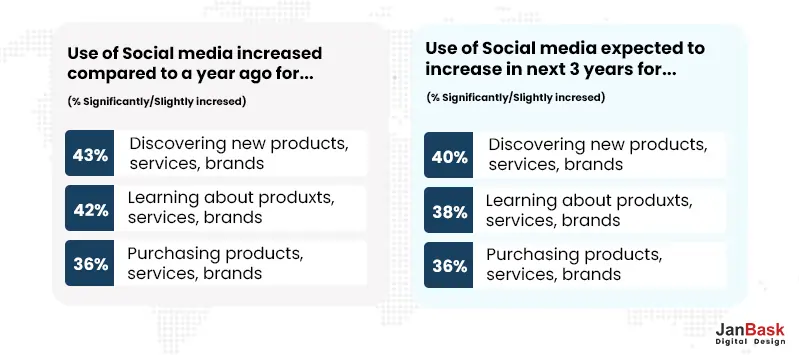
Twitter recently unveiled its Twitter Stores tool to a select group of merchants in an effort to get a piece of the social commerce action. A "View shop" button is located directly above the tweets of a merchant whose Twitter Shops are enabled when you visit their bio. T tap the button and the merchant's shop appears, allowing you to browse a gallery of up to 50 product listings.
On Twitter, there isn't a checkout for apps right now. Instead, clicking on an item sends you to the retailer's website, where you may finish the transaction. But, we anticipate Twitter launching its native checkout functionality soon, similar to what Facebook and Instagram have.
1. What is a social commerce strategy?
Using social media platforms for buying and selling goods and services is known as a social commerce strategy.
Define social commerce strategy, which is an extension of your entire marketing strategy, specifies how you should operate and evaluate your social commerce campaigns and presence.
Choosing which platforms to sell on, what products to promote and include in your social shops, and how to use other channels, like paid advertising, to support your social commerce aims are all examples of this.
2. Why do I need a social commerce strategy?
Social media is a preferred buying platform for millennials and GenZ. In fact, experts say in 2021, more than 50% of US internet users in this demographic category bought anything through a social network app. Brands that wish to connect with this demographic must thus be present and engaged where they hang out.
3. Explain the key benefits of a social commerce strategy?
4. What are the types of social commerce?
Social media has completely changed the traditional way of marketing, now companies and customers communicate with the aid of social commerce, the newest application. The moment has come to embrace change with flexibility. Top social commerce companies like JanBask Digital Design can help businesses scale more quickly, the earlier you try it out.
Smaller businesses now have access to markets that were previously only exposed to larger companies. Additionally, because of the rapid development of social shopping features by Twitter, Pinterest, Facebook, and Instagram, small companies have the chance to increase sales without the need for any costly marketing initiatives.
Looking to Promote Your eCommerce Brand On Social Media?

A
This blog post provides an excellent overview of social commerce and its growing importance in the digital marketplace.
B
Social commerce is undeniably the future of online shopping. Your blog post highlights this trend perfectly.
D
I love how social commerce is changing the way we shop online. It’s so convenient to discover new products through my social media feeds and make purchases without leaving the app. This is the future of e-commerce!
C
I appreciate the emphasis on personalization in social commerce.
G
This blog is your resource for staying ahead in this evolving field.